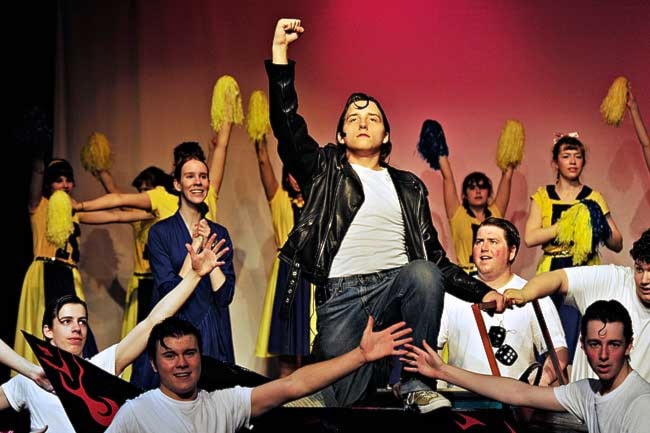Travellers of all kinds come to the Yukon to experience the spacious landscape, but for the next few weeks, visitors to Dawson City will encounter two artworks that invoke even larger distances than usual.
Sculptures by Brandon Vickerd and Stephen Kelly are in Dawson from August 14 to September 18 for this year’s edition of The Natural and The Manufactured - an annual collaboration between the ODD Gallery and Klondike Institute of Art and Culture’s artist-in-residence program.
“The link between this year’s projects is that both suggest the landscape is less and less something we see personally and intimately everyday,” says Lance Blomgren, Director of the ODD Gallery. “Instead, it becomes something we experience through a screen, through technologies that map the landscape for us.”
Brandon Vickerd offers a glimpse of space technology with “Northern Satellite,” a full-scale replica of a GPS satellite that the Toronto sculptor crafted from birch wood. Placed in a shallow hole in Dawson’s waterfront park, the satellite looks as if it has crashed.
Northern Satellite allows people to see a mysterious, high-tech object up close. It is also a creative response to “seeing people stumble around with a handheld GPS, trying to make sense of where they are and never looking up to simply see what’s around them,” Vickerd says.
“I think most of our current woes (greenhouse gas, genetic manipulation) stem from the way we view nature and technology as either subservient or a as a threat,” he says. “And I think contemporary art can play a role in re-calibrating that dichotomy, by presenting new ways of viewing both nature and technology.”
Northern Satellite “collides the peak of technological achievement with the hard reality of the Earth,” Vickerd says. He made the GPS out of wood to embody in reverse the double reality we inhabit more and more: navigating the physical, natural world through digital interfaces.
In the ODD Gallery, Stephen Kelly’s Open Tuning installation compresses distance to bring a record of remote marine movements into quiet, indoor, domesticated space.
A few years ago, the Halifax sound artist discovered that sensors on faraway Fisheries and Oceans buoys continuously feed data to a Department of Fisheries and Oceans website set up for public use.
Most people use the information for marine navigation. Kelly, who is also an electronics technician, experimented until he found ways to use the data to program the height, speed, and rotation of his “instruments.”
Visitors to Open Tuning will see visually simple sculptures - black, straight metal bars with stripped-down speakers at each end. These body-sized beams swing up and down in imitation of real-time ocean waves, while the speakers produce electronic chords that also morph in time with the variations in wave speed and height.
“I view both nature and technology in general as very beautiful and often complex beyond my comprehension,” Kelly says. That mystery and complexity feels like “an invitation to investigate the inner workings of both and to contemplate their sometimes awkward relationship to one another.”
Kelly thought of the project when he was learning to surf near Halifax, where he lives. “As I was floating and trying to figure out this mythical and rather difficult sport, the massive physical force and significance of the ocean was made real to me,” he recalls. “The ocean’s currents directly affect regional and global climates, but its physical force and influence have no representation in the urban landscape.”
Open Tuning, and an earlier installation called WaveUp, became a way for Kelly to think visually and acoustically about the enormous and influential body of water next door to his daily routines.
Both Vickerd and Kelly involve viewers physically, Vickerd by the scale and location of Northern Satellite (you have to walk around it, outdoors, to understand it) and Kelly by using low-pitched sounds that morph between harmonies and disharmonies as Open Tuning flows on (the low frequencies gently immerse the listener’s body).
Digital technologies can and do provoke alienation between people and the natural environment. But as Kelly and Vickerd demonstrate, these technologies can also be creative tools, repurposed to give fresh, personal experiences of natural geography and digital distance.
Vickerd and Kelly will give artists’ talks on Thursday, August 13 at 7 p.m. The Natural and The Manufactured also includes a public lecture, this year given by Winnipeg art critic and cultural theorist Jeanne Randolph. She presents My Manufactured Life, a slide lecture, on Friday, August 14 at 8 p.m.
Both events are in the Klondike Institute of Art and Culture Ballroom above the ODD Gallery.
